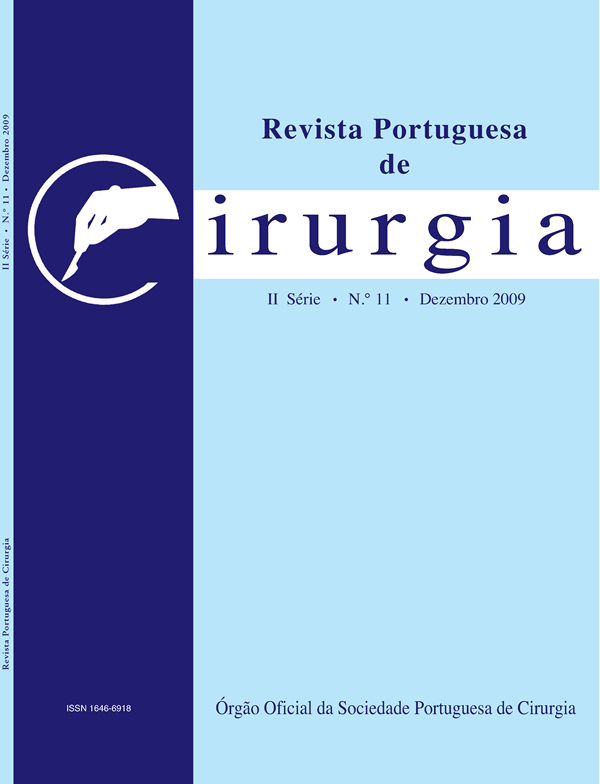Preditive factors of postoperative mortality after hepatic resection for hepatocellular carcinoma - Retrospective study of 69 cases
Abstract
Recently, mortality associated with hepatic resection suffered a considerably reduction. To determine the prognostic factors of mortality after hepatic resection for hepatocellular carcinoma, a retrospective study of 69 cases operated between 1990 and 2008 was undertaken. Patients ́ mean age was 61,8 years-old and 93% were male. Chronic liver disease was present in 73% of cases. Mean Charlson’s Index and M.E.L.D. were 4,5 and 9,7, respectively. Fifty percent of the tumors were in stage I of T.N.M. classification, 27% in II and 23% in III. Thirty three resections were major (48%) and nine iterative (13%). Mortality and morbidity rates were 7,2% and 47,8%, respectively. In univariate analysis, mortality was significantly related with age (72,6±6,9 vs 60,9±10,9; p=0,022), Béclére Index,T.N.M. and Okuda staging systems. The other analyzed variables weren’t statistically relevant, including Charlson’s Index, M.E.L.D., hepatic fibrosis and steatosis, type of operation (major or minor, iterative or primary), transfusions, Pringle maneuver and others. Patients with age equal or superior to 70 years-old had higher mortality rates (21,1 vs 2%; p=0,006; odds ratio=10,5; accuracy=77%) and age revealed to be the only independent predictive factor in multivariate analysis. The probability of operative death increase with age between 0,05% (≤ 50 years old), 2,9% (51-69) and 20,2% (≥ 70). The present series suggests that age represent a relevant factor in preoperative evaluation of patients candidate to hepatic resection for hepatocellular carcinoma.
Keywords: Postoperative mortality, hepatic resection, hepatocellular carcinoma
Downloads
Downloads
Published
Issue
Section
License
Para permitir ao editor a disseminação do trabalho do(s) autor(es) na sua máxima extensão, o(s) autor(es) deverá(ão) assinar uma Declaração de Cedência dos Direitos de Propriedade (Copyright). O acordo de transferência, (Transfer Agreement), transfere a propriedade do artigo do(s) autor(es) para a Sociedade Portuguesa de Cirurgia.
Se o artigo contiver extractos (incluindo ilustrações) de, ou for baseado no todo ou em parte em outros trabalhos com copyright (incluindo, para evitar dúvidas, material de fontes online ou de intranet), o(s) autor(es) tem(êm) de obter, dos proprietários dos respectivos copyrights, autorização escrita para reprodução desses extractos do(s) artigo(s) em todos os territórios e edições e em todos os meios de expressão e línguas. Todas os formulários de autorização devem ser fornecidos aos editores quando da entrega do artigo.



